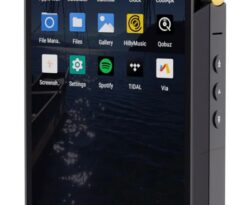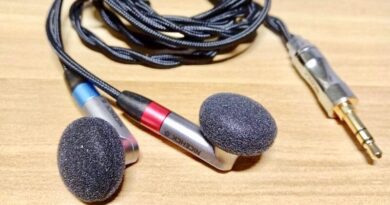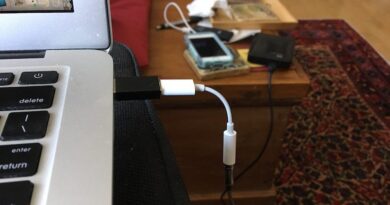TRN Kirin Review – Inoffensive Planar
Kirin are TRN’s latest attempt at a planar-based IEM. Modestly priced (for a planar), they retail for just above $120. I got a sample to assess and here are my notes.
In this Article
At-a-glance Card
| PROs | CONs |
| Well calibrated, inoffensive, pleasant musical tuning. | Some might find tuning too relaxed. |
| Easy to drive within the planar category. | Average technicalities (detail retrieval in particular). |
| Rich package of good accessories. | Only one of the three tuning nozzles sets worth using. |
| Modular-plugs cable. | Potential fit issues. |
Full Device Card
Test setup
Sources: Questyle QP1R / Sony NW-A55 mrWalkman / Questyle M15 / Questyle CMA-400i – Final E tips – Stock cable – lossless 16-24/44.1-192 FLAC and DSD64/128 tracks.
Signature analysis
Tuning nozzles
Kirin feature a replaceable nozzle system. Three pairs of different nozzles are supplied standard, labelled “Trasnparency”, “Reference” and “Atmospheric”, they differ in terms of length, internal bore, and external mesh and are supposed to finetune the presentation in 3 different ways.
Indeed, I found no audible differences when swapping Transparency and Reference back and forth, while Atmospheric does indeed offer a change, which is however limited to the highmids and trebles – the rest of the mids and the whole bass is to me identical no matter which nozzles get installed.
Atmospheric nozzles offer a tad more brilliant female vocale, and more relaxed highmids and trebles, which is not only good but in my opinion needed, as highmids and trebles get easily shouty on Transparency/Reference nozzles.
Long story short: Atmospheric nozzles are to me by far the best option, read: the sole good one, and once I realised that it’s with those on that I conducted all the rest of my assessment.
Tonality
Kirin’s presentation is a very wide V, featuring modestly elevated bass and enhanced however not offensive treble. Mids are not overly recessed so the overall experience is quite “balanced” in the end, and pleasant to listen to. Tonality is neutral with a tint of warmth. There’s a quite evident planar timbre, but it’s less pronounced compared to other cases I experienced, it’s not overly annoying.
Sub-Bass
Sub bass is not rolled off however it’s less elevated than mid-bass. Besides, it’s in itself tuned to be somewhat shy, the end result being that rumble is there but never comes forward nor imposes its presence, it rather stays in the back as a perceivable recessed foundation.
Mid Bass
Midbass is in the typical planar style: very fast. It’s also moderately punchy, enough to be significant, but not to be evident. Texturing is quite limited.
Mids
Kirin mids are well articuleted and moderately bodied, which counterbalances them being somewhat recessed. Overall I can call them nice.
Male Vocals
Male voices have a natural tonality, maybe with a touch of warmth. Tenors are ok, baritones and basses are a tad too light instead.
Female Vocals
Female vocals are better than male, more forward, energetic and well bodied. No shouts nor sibilance.
Highs
Kirin trebles are very likely the result of a precise tuning choice: they are very extended, airy, quite detailed and well bodied while at the same time carefully dampened never to become shouty or otherwise piercing/offensive. They carry a definite planar timbre but the consequent tint of artificiality in Kirin’s case is much lighter then in many other cases I heard.
Technicalities
Soundstage
Kirin cast a nice 3D stage. It’s size is no more than average however.
Imaging
Imaging is decent yet not stunning. Probably due to treble “softening”, I guess, there’s some sort of light fog in room. Not a criminal offense, however, considering the product cost.
Details
This is a weak spot on Kirin. Detail retrieval is just basic all across the frequencies (trebles a whiff less bad, but nothing to be particularly happy about)
Instrument separation
Layering and instrument separation, like imaging, can be rated as average/decent
Driveability
Kirin’s relatively high sensitivity is very uncommon for a planar driver, and makes them not hard to drive at all.
Physicals
Build
Housings appear solid and well built.
Fit
Fitting Kirin may be a problem for some due to its housings’ “bowly” shape. Nozzles protrude from the main body enough, however, so getting the tips into the canal and score a good seal is not impossible, the (possible) issues are more on the side of stability and comfort. Of course it all depends on one’s concha shape/size.
Comfort
Read above about “fit”. In my case, for example, Kirin’s bowly housings don’t fully fit into my conchas; once worn they do feel OK (no angles, no aching edges nor anything) but their staying “a bit outside” give me a sort of “unsecure seating” feeling.
Isolation
Depending on luckier or unluckier pairing with one’s outer ear there’ll be more or less passive isolation. Even in the luckiest case however three vents on the housings will do their job against isolation.
Cable
Stock cable is nice. An 8 core very soft brided silver plated OFC chord, with modular terminations. All 3 most common terminal plugs (3.5, 2.5 and 4.4) are offered free in the box, with the further addition of a 3.5-6.25 adapter.
The modular plug system is quite basic, no lock-in system is present. The connectors on the housings side are 2-pin with an uncommon “oval shape” variation to a QDC shell around them : third party non-QDC 2pin cables will fit, but look a bit odd when plugged.
Specifications (declared)
| Housing | TRN Kirin’s housing is made of CNC-machined magnesium alloy. This aerospace material is effective in reducing harmonic resonance, providing a rigid and durable structure. |
| Driver(s) | 1 Planar magnetic driver |
| Connector | 2-pin “oval” QDC |
| Cable | 8-core silver-plated oxygen-free copper cable, 1.2m, with modular termination plug system. 3.5, 2.5 and 4.4 plugs included. |
| Sensitivity | 106 dB |
| Impedance | 32 Ω |
| Frequency Range | 7-40000Hz |
| Package & accessories | Aluminum storage case, 3.5/2.5/4.4mm cable terminal plugs, 6.5mm jack adapter, 3 pairs (S/M/L) balanced silicon eartips, 3 pairs (S/M/L) bass silicon eartips + 1 pair foam eartips, 3 pairs tuning nozzles (Transparent / Reference / Atmospheric) |
| MSRP at this post time | $122.00 |
Comparisons
TINHIFI P1 ($129)
Very simply put: Kirin and P1 offer quite similar outputs. Both have near-natural tonality, a not excessive planar timbre, smooth trebles, modest technicalities. P1 are probably a tad more “refined” in some sonic traits, and easier to fit. On the flip side, P1 are much harder to drive, and infuriatingly capricious when it comes to tips selection.
7HZ Timeless ($200)
As you might remember, I’m not particularly fond of 7Hz Timeless (follow link above for my take on them). That apart, the two IEMs offer very different tunings. Timeless are energetic and engaging, with a stronger bass line and cast a wider stage. On the other hand Timeless’s planar timbre is much more annoying, up to making its entire musicality a perceivable bit artificial, and their stage, however wider, is dramatically bidimensional. Timeless’ trebles are also too often shouty and fatiguing, which never happens on Kirin (with the Atmospheric nozzles).
Conclusions
TRN Kirin are with little doubt the most interesting TRN drivers I heard as of yet.
Don’t get overexcited: they are and stay a pair of budget IEMs but it’s fair and just to underline that TRN paid some good effort here resulting – first of all – in a pleasantly sounding system. Which is never a small thing.
More in detail, Kirin offer fast transients, quasi-natural tonality, and don’t drown under a cheap planar timbre as much of the competition does. They can surely grant clean, relaxed listening especially to acoustic music lovers. On the flip side: their technicalities have ample room for improvement, and who loves engaging, energetic presentations will want to look elsewhere.
Once again my sincere thanks to TRN for the free sample I received. You can get Kirin here.
Our generic standard disclaimer.







